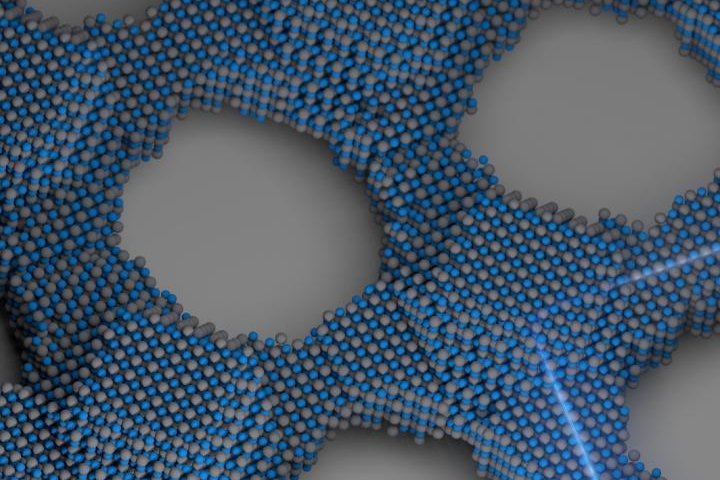By directly fusing together crystals made of nanocrystals, researchers have created quantum dot solids that may eventually yield a breakthrough in the field quantum electronics. Photo by Kevin Whitham/Cornell University
ITHACA, N.Y., Feb. 25 (UPI) -- Researchers at Cornell are exploring the potential of quantum dot solids, crystals made out of crystals. Their hopes are high.
Some 60 years ago, the wafer -- a single-crystal slice of semiconducting silicon -- revolutionized electronic communication systems. Scientists think quantum dot solids could have a similar impact.
Newly developed chemical processes have allowed researchers to synthesize lead-selenium nanocrystals into larger crystals and then fuse them together to create a unique 2D superstructure.
Previously, nanocrystals were held together in substrate. The new quantum dot solids feature no intermediary material -- it's all crystal.
The development allows for electronic coupling of quantum dots, an important component of quantum electronics. The superstructure material serves as a controllable electronic structure.
But it's not perfect. The nanocrystals are not uniform, and defects can interrupt electron wave function.
Still, researchers at Cornell say their work is pushing the technology in a promising new direction. Their latest experiments with quantum dot solids are described in the journal Nature Materials.
The material has "major potential for unprecedented optoelectronic devices," researchers wrote.
"I see this paper as sort of a challenge for other researchers to take this to another level," graduate student Kevin Whitham said in a news release.
"This is as far as we know how to push it now, but if someone were to come up with some technology, some chemistry, to provide another leap forward, this is sort of challenging other people to say, 'How can we do this better?'"















